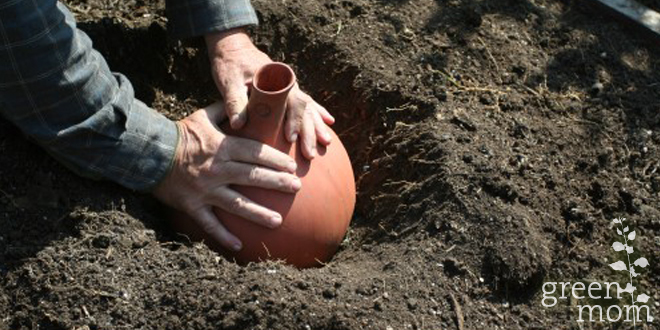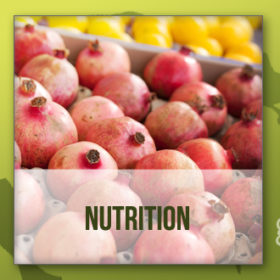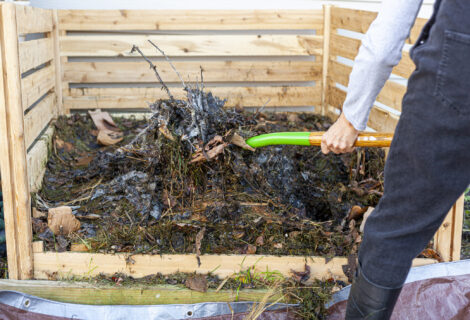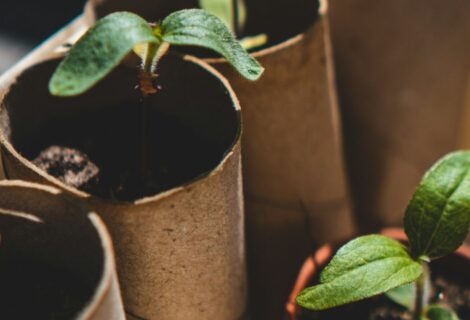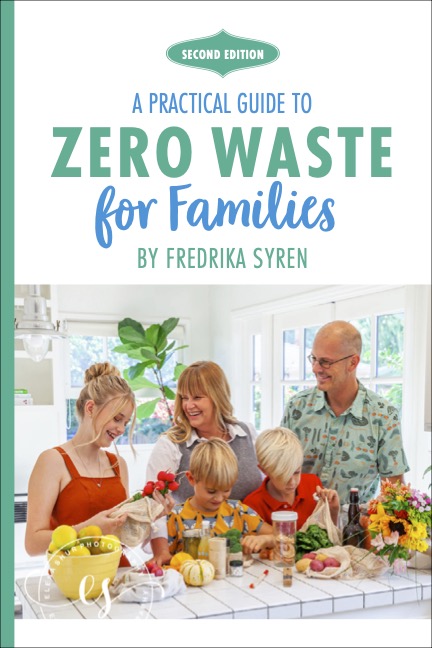An olla (pronounced oy-yah) is an ancient method of irrigation that uses a clay pot buried under the soil to water plants.
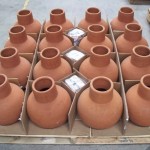
Although it has a long history of traditional use, it is fairly unknown in modern day gardens, much to our loss because of its huge potential for water saving and sustainability!
An olla’s typical large round base is buried under the soil with its narrow neck protruding to the surface. The olla works for irrigation because the clay these pots are made from is porous, which allows water to seep out into the surrounding soil without saturating it, while also preventing evaporation from the surface of the soil. The olla will need to be sized according the area being planted, whether in a container or in the ground. A medium to large olla (8- to 10-inch circumference) can water the soil in about an 18-inch circumference.In other words, if you have a container which is around 18 inches wide, you wouldn’t need an olla larger than 10 inches. If you have a garden bed that is about 4’-5’ wide, you could use three 10-inch ollas, or try two larger size ollas. Several can be arranged throughout a garden bed or greenhouse for water to reach every plant.
The same effect can be had using homemade systems. To make your own olla, start with two unglazed clay terra cotta pots of the same size. Plug the drain hole in one of the pots with a wine cork or a bit of ceramic to keep it
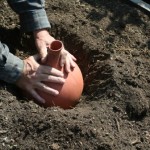
from releasing too much water too quickly. Leave the other pot’s drain hole open, as this is where you add water! Using waterproof gorilla glue or an equally strong and waterproof adhesive, secure the top rims of the pots to each other, creating a complete seal and a cohesive unit with a wide middle. Let the glue dry completely, and then your olla is ready! The blocked end is the bottom of the olla. Now one unit, it is ready to be buried in the soil deeply enough so only the top ½ inch or so of the pot is above ground. The tops can be painted white with a nontoxic paint if you wish, to further reduce heat absorption and evaporation. Depending on the local climate and the size of the pot, it will need refilling every 2-3 days. Plants and seeds can be immediately planted within the reach of the olla’s watering diameter.
Ollas are gaining in popularity in sustainable agriculture and in home gardens. In developing agricultural nations, there are efforts in place to use ollas on a large scale as a multi-faceted ecological and economical model. Local people can create ollas as a source of income, and farms can benefit from using the ollas by saving water and promoting sustainable agriculture. Have you ever used an olla in your home garden? Let us know what you think of this method of irrigation or how it works for you! Happy gardening!


